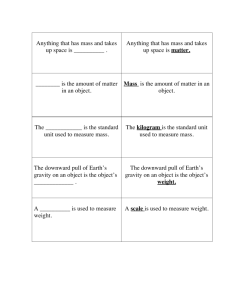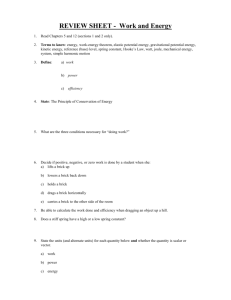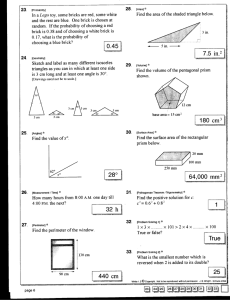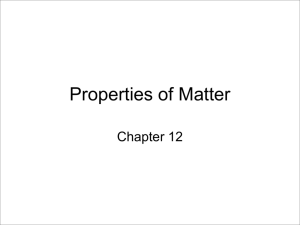The Black Hole Shredder—C.E. Mungan, Spring 2001
advertisement
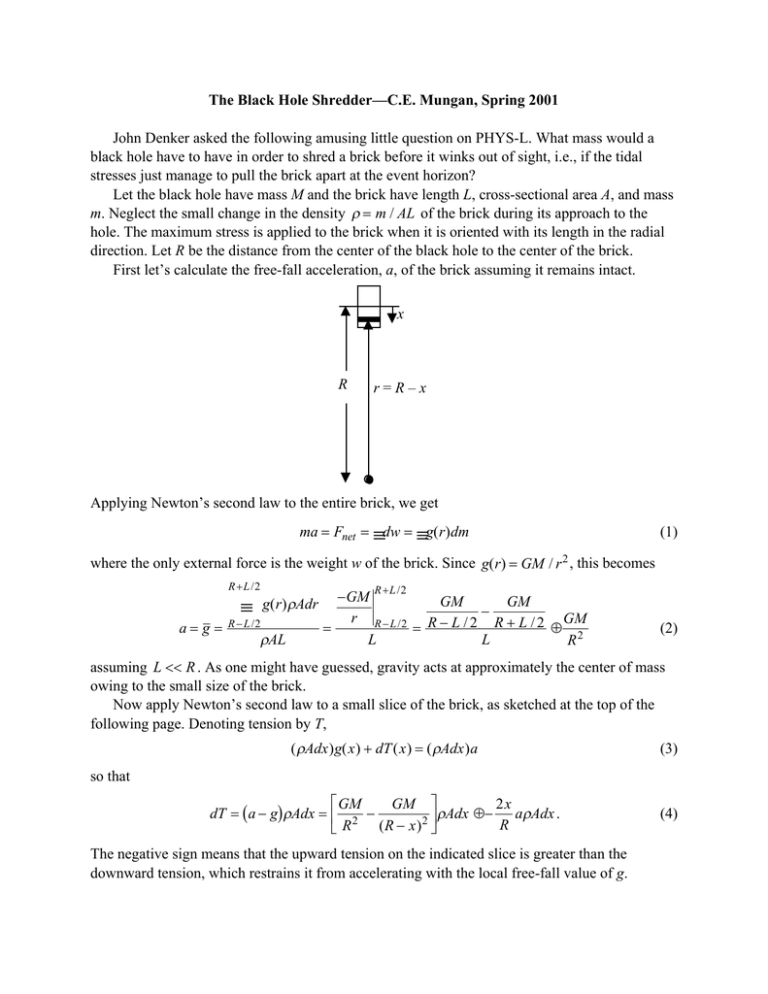
The Black Hole Shredder—C.E. Mungan, Spring 2001 John Denker asked the following amusing little question on PHYS-L. What mass would a black hole have to have in order to shred a brick before it winks out of sight, i.e., if the tidal stresses just manage to pull the brick apart at the event horizon? Let the black hole have mass M and the brick have length L, cross-sectional area A, and mass m. Neglect the small change in the density ρ = m / AL of the brick during its approach to the hole. The maximum stress is applied to the brick when it is oriented with its length in the radial direction. Let R be the distance from the center of the black hole to the center of the brick. First let’s calculate the free-fall acceleration, a, of the brick assuming it remains intact. x R r=R–x Applying Newton’s second law to the entire brick, we get ma = Fnet = ∫ dw = ∫ g( r) dm (1) where the only external force is the weight w of the brick. Since g( r) = GM / r 2 , this becomes R +L /2 a= g = ∫ R − L /2 g( r) ρAdr ρAL R +L /2 −GM GM GM − r R − L / 2 R − L / 2 R + L / 2 GM = = ≈ 2 L L R (2) assuming L << R . As one might have guessed, gravity acts at approximately the center of mass owing to the small size of the brick. Now apply Newton’s second law to a small slice of the brick, as sketched at the top of the following page. Denoting tension by T, ( ρAdx ) g( x ) + dT ( x ) = ( ρAdx ) a (3) GM GM 2x a Adx . dT = ( a − g) ρAdx = 2 − 2 ρAdx ≈ − R ρ (R − x ) R (4) so that The negative sign means that the upward tension on the indicated slice is greater than the downward tension, which restrains it from accelerating with the local free-fall value of g. x = –L/2 x=0 x +dT x = +L/2 dw Integrating Eq. (4) and dividing by the cross-sectional area gives the stress profile in the brick, σ ( x) = GMρ L2 2 − x R3 4 (5) since T = 0 at the free ends. The maximum stress thus occurs at the center. The brick will be on the verge of crumbling when this equals the tensile strength, σ max = GMρ L2 . R3 4 (6) Finally, we set R equal to the Schwarzschild radius. A particle of mass m can just escape from an astronomical body of mass M and radius R if its total energy is zero so that it reaches infinity with zero speed, GMm 1 2 mυ esc − = 0. R 2 (7) Setting the escape speed equal to the speed of light, υ esc = c , so that not even light can escape, gives the Schwarzschild radius as R= 2GM . c2 (8) Substituting Eq. (8) into (6) and solving for the required mass of the black hole gives M= Lc 3 G ρ . 32σ max (9) I don’t happen to have an ordinary building brick (ASTM C62) lying around to make measurements of its size and mass, but according to the internet it is 9" = 23 cm long and has a density of 120 lb/ft3 = 1900 kg/m3. Nelson Physics <http://www.nelsonitp.com/physics/> cites a tensile strength of 1 MPa (which seems a bit high but will therefore give a lower bound on M). The resulting value for M is 360 solar masses! Needless to say, no ordinary black hole formed during a stellar collapse could have a mass this large, although the supermassive holes postulated to exist at the center of galaxies such as the Milky Way certainly can.
